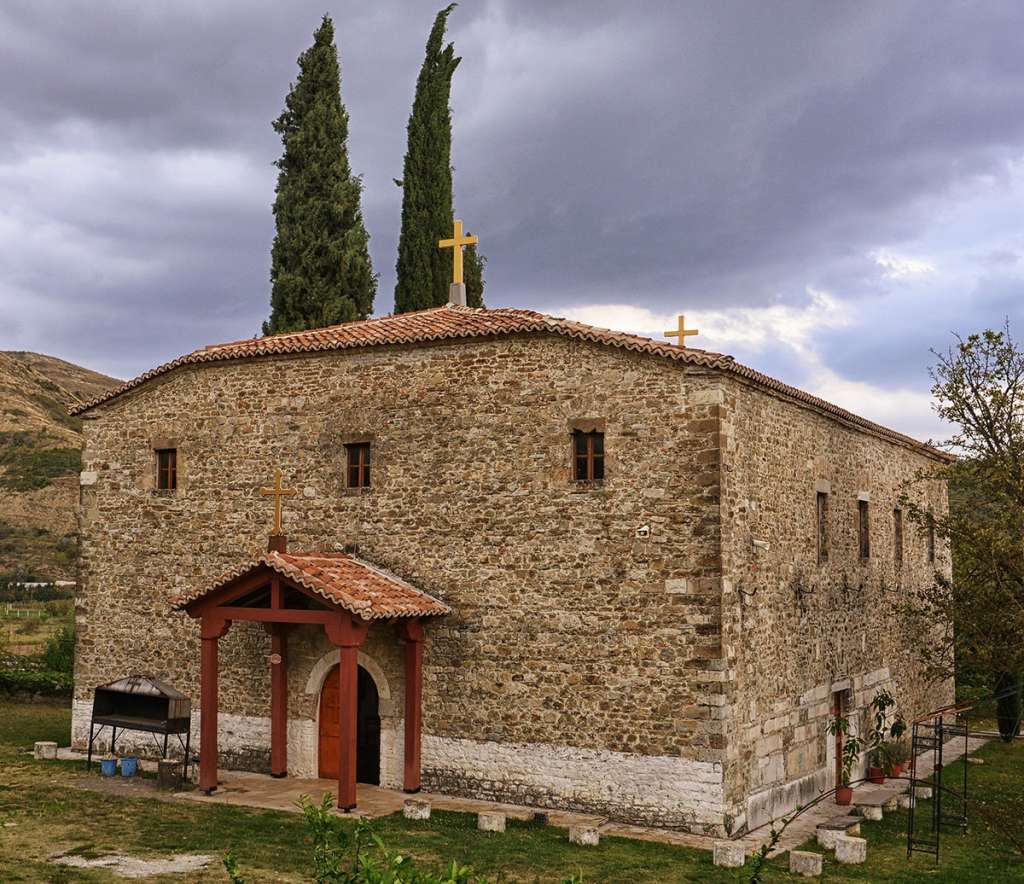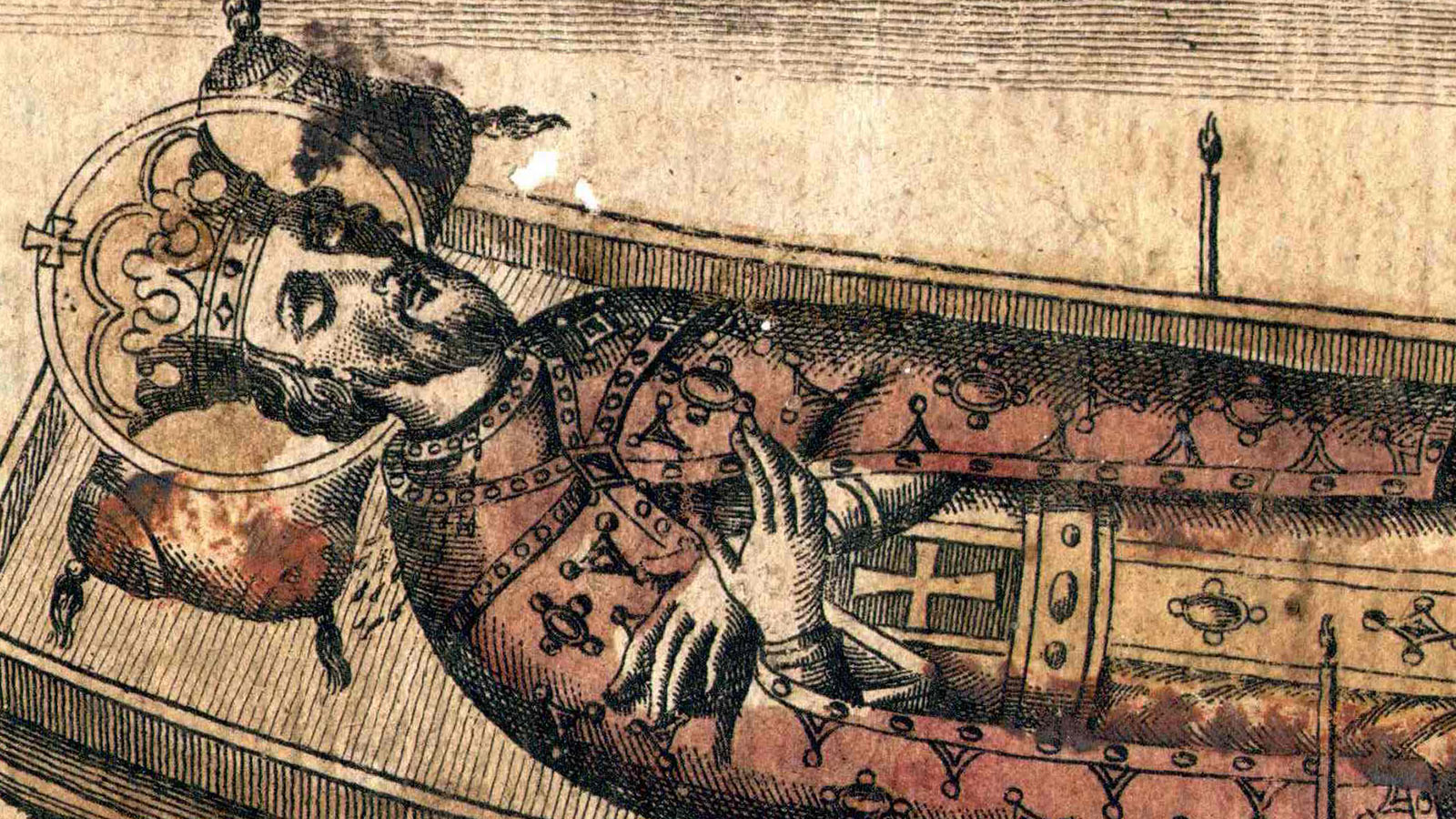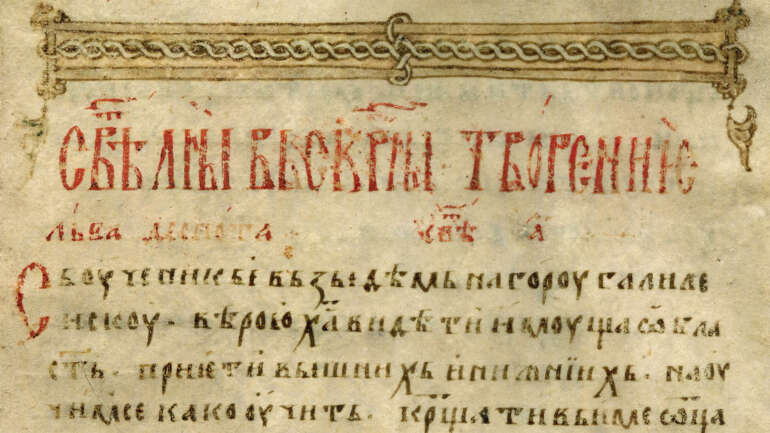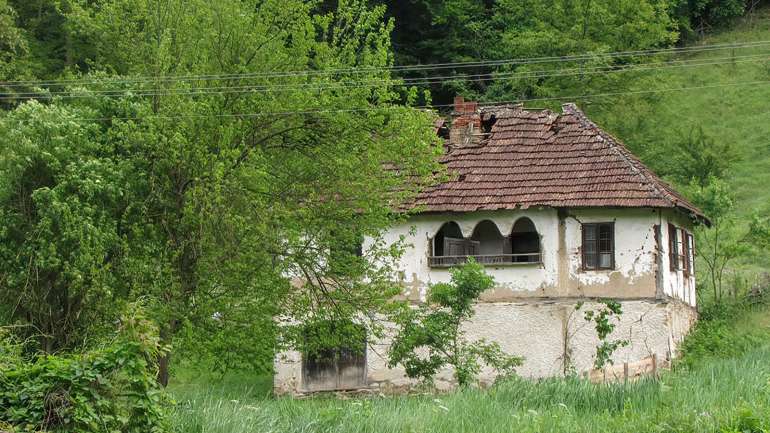By: Branislav Cvetković, museum advisor
In the museum’s Collection of icons, there are also those printed on paper, of which only a few were made by graphic techniques. Although all of them are precious, the one with the smallest format has exceptional value, which today can be said to be the only known, and probably the only preserved graphic print of this type representing St Jovan Vladimir on the bier. It is a colored copper engraving (15 x 18 cm), which was brought from Hilandar to Jagodina with a well-known collection of medieval manuscripts in 1893 by Bogoljub Tirić, a professor of French and Old Slavonic, and director of several Serbian high schools. Thanks to the efforts of Anica Jovanović, a teacher of the Serbo-Croat language at the Jagodina High School, who at the time used to work in our Museum, she succeeded to acquire this material in 1971 by being donated to the Museum by Germaine, the wife of Tirić’s nephew Momčilo.
Older researchers of Greek paper icons (D. Papastratou, D. Davidov) in their time found two similar graphics. The first one is in the booklet of the printed service to the saint from 1690, and its author was the Venetian engraver and nun, Sister Isabella Piccini (1644–1732), a member of the Franciscan order. Another variant is found in a similar edition from 1774, but its author is an unknown engraver. It is extremely unusual that in the Hilandar monastery collection there is a copper plate from which the Jagodina specimen was printed, but in the meantime the plate was damaged because by being pierced in the middle. Comparison makes it clear that the Jagodina specimen is closer to the 1774 print than to the one from 1690. Although our engraving was published in 1994, recent authors overlooked it in their articles and books, reproducing only the copper plate from Hilandar. Moreover, the bibliography renders even confusing data due to errors in denoting precise dates for different engravings.
Jovan Vladimir (ca 990–1016) was ruler of medieval Duklja (Doclea), murdered by Tsar John Vladislav, son of Tsar Samuel. At first, his cult spread slowly in the Balkans, as evidenced by cult texts written first in Latin and later in Greek and Old Slavic. During the following centuries, his imagery was multiplied in churches from Greece to Hungary. Although his relics were moved to various places, today the center of his cult is the Shin Gjon church in Elbasan and in Bar there is a monumental temple dedicated to St Jovan Vladimir. One of the preserved icons with the cycle of his life, transfer of relics, miracles and image of Karl Topia as restorer of Shin Gjon church, comes from the Ardenica monastery church and is kept in a Korcë museum.











